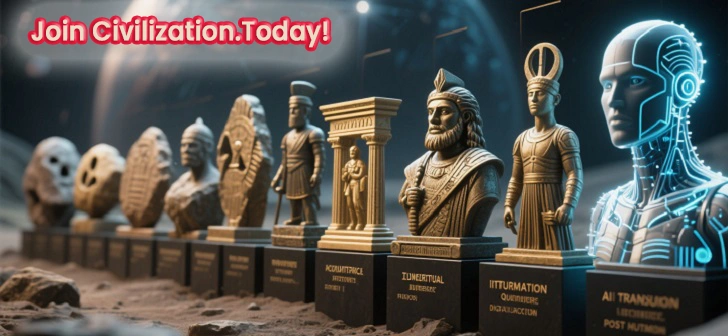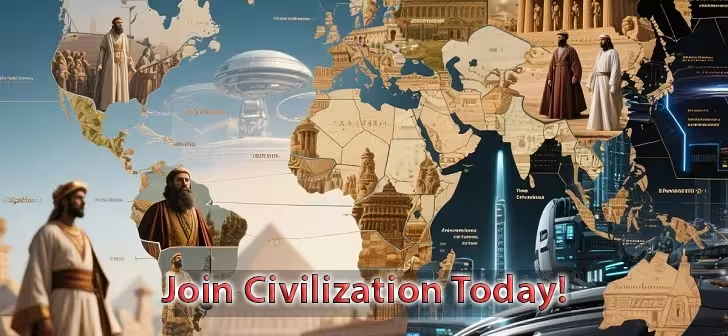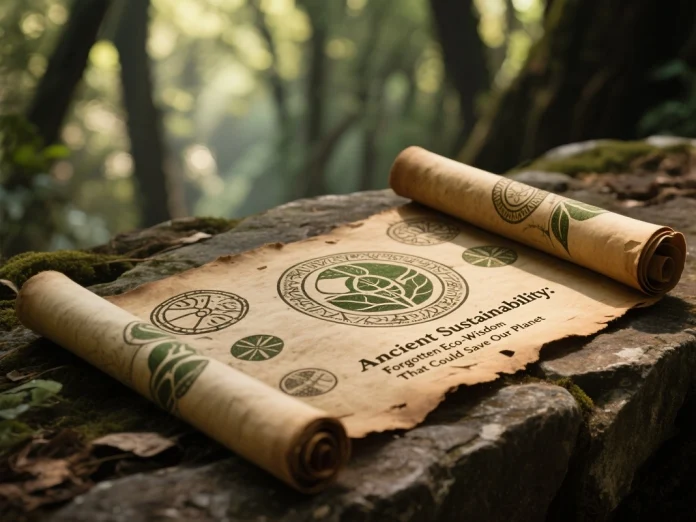In our race toward technological advancement, we often overlook one truth: sustainability isn’t a new concept. Long before “carbon footprint” and “climate crisis” became buzzwords, ancient civilizations were practicing what we now call ancient sustainability—living in harmony with nature, respecting natural cycles, and building societies that endured for centuries without destroying their environment. From the terraced farms of the Inca to the water management systems of the Indus Valley, these time-tested practices might just hold the key to saving our modern world from ecological collapse.
1. The Timeless Principles of Ancient Sustainability
The concept of ancient sustainability is rooted in the idea that humans are part of the ecosystem—not separate from it. Ancient communities thrived by:
- Using resources at a regenerative pace so nature could replenish itself.
- Designing infrastructure to last centuries, not decades.
- Respecting biodiversity as an essential part of survival.
Civilizations like the Mayans, Egyptians, and Mesopotamians didn’t have environmental science degrees, yet they understood that the survival of their people depended on the survival of their land.
2. Agricultural Wisdom That Outperforms Modern Farming
Modern agriculture often relies on monoculture, heavy pesticides, and artificial fertilizers—methods that boost short-term yields but degrade soil health over time. Ancient farmers had other ideas:
- Inca Terracing. The Incas carved steps into mountain slopes, preventing soil erosion and maximizing rainfall capture. This method allowed them to grow crops in harsh Andean climates without destroying the land.
- Three Sisters Planting. Native American farmers planted corn, beans, and squash together, creating a natural support system where each crop benefited the others.
- Aztec Chinampas. Floating gardens built on lakes that not only produced food year-round but also filtered water naturally.
These techniques prove that sustainable farming can be both productive and environmentally friendly.
3. Water Management: Ancient Hydrological Engineering
Water scarcity is one of the greatest threats of the 21st century, yet ancient civilizations mastered water management without modern machinery.
- Indus Valley Civilization. Their urban centers had advanced drainage systems that recycled wastewater and prevented contamination.
- Roman Aqueducts. These marvels of engineering transported clean water over vast distances with minimal environmental disruption.
- Qanat Systems in Persia. Underground channels tapped into aquifers, delivering water to arid regions without evaporation losses.
If these systems were adapted with modern materials and technology, we could revolutionize how cities manage water today.
4. Architecture Built to Endure and Breathe
Ancient builders designed structures that were naturally energy-efficient:
- Egyptian Pyramids & Temples. Thick stone walls kept interiors cool without air conditioning.
- Greek and Roman Courtyards. Open-air layouts promoted natural ventilation and lighting.
- Adobe Houses of the Southwest. Made from earth, these homes maintained stable temperatures year-round.
Unlike modern construction that often sacrifices durability for cost-cutting, ancient architecture prioritized longevity, meaning fewer resources spent on rebuilding.
5. Cultural Practices That Preserved Nature
Ancient sustainability wasn’t just about engineering—it was also embedded in cultural and spiritual beliefs:
- Sacred Groves in India. Protected forest areas were left untouched due to religious significance, preserving biodiversity.
- Polynesian Tabu System. Certain fishing areas were off-limits during spawning seasons, ensuring fish populations remained stable.
- Maasai Land Management. Pastoral grazing rotations prevented overuse of grasslands.
By integrating environmental respect into their traditions, these societies ensured that sustainability wasn’t optional—it was part of life.
6. Lessons for the Modern World
Modern sustainability efforts often focus on new technologies like solar panels, carbon capture, and AI-driven climate modeling. While these are valuable, we should also consider the low-tech, high-impact wisdom of ancient sustainability. By blending ancestral knowledge with modern innovation, we can create systems that are both effective and ecologically sound.
7. The Call to Action: Relearning Before It’s Too Late
Our ancestors didn’t have the luxury of ignoring environmental limits—they adapted or collapsed. Today, we have the choice to learn from their successes before history repeats itself. Imagine cities designed with natural cooling systems, farms that regenerate the soil, and water networks that waste nothing. This isn’t nostalgia—it’s survival.
Conclusion: The Past Is Our Future
The irony of modern civilization is that we might need to look thousands of years into the past to find solutions for the future. Ancient sustainability isn’t just a historical curiosity—it’s a roadmap. And if we follow it wisely, we might just avoid the same fate as the civilizations that ignored their environmental limits.




